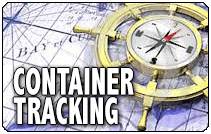At the time the van foreman loads your shipment an inventory must be made. Inventories not only list the items in the shipment but also the condition of the items. The inventory is a document required by customs at destination. Preparation of the inventory for an international shipment differs from that of a domestic shipment. On the international inventory the contents of each carton or crate must be listed. This applies to cartons you may have packed as well as the cartons packed by the origin agents crew.
After completing the inventory the driver will sign each page and ask that you do the same. It is important that, before signing, you make certain that the inventory lists all items and the conditions of each item are correctly described.
At the time of delivery you should check each item received against the inventory noting missing or damaged items. Both the driver and you are again required to sign the inventory at destination. You should retain a copy of the inventory both at origin and destination. After delivery is made your ability to collect for any loss or damage is governed by notations made on the inventory.
The top of the inventory will show certain code letters used by the carrier to show pre-existing damages. An example of this coding is shown below:
| BE – Bent | MI – Mildew |
| BR – Broken | MO – Moth Eaten |
| BU – Burned | CP – Carrier Packed |
| CH – Chipped | PBO – Packed By Owner |
| CU – Contents & Conditions Unknown | R – Rubbed |
| D – Dented | RU – Rusted |
| F – Faded | SC – Scratched |
| G – Gouged | SO – Soiled |
| L – Loose | T – Torn |
| M – Marred | W – Badly Worn |
| Z – Cracked |
| 1 – Arm | 5 – Left | 9 – Side |
| 2 – Bottom | 6 – Leg | 10 – Top |
| 3 – Corner | 7 – Rear | 11 – Veneer |
| 4 – Front | 8 – Right |





